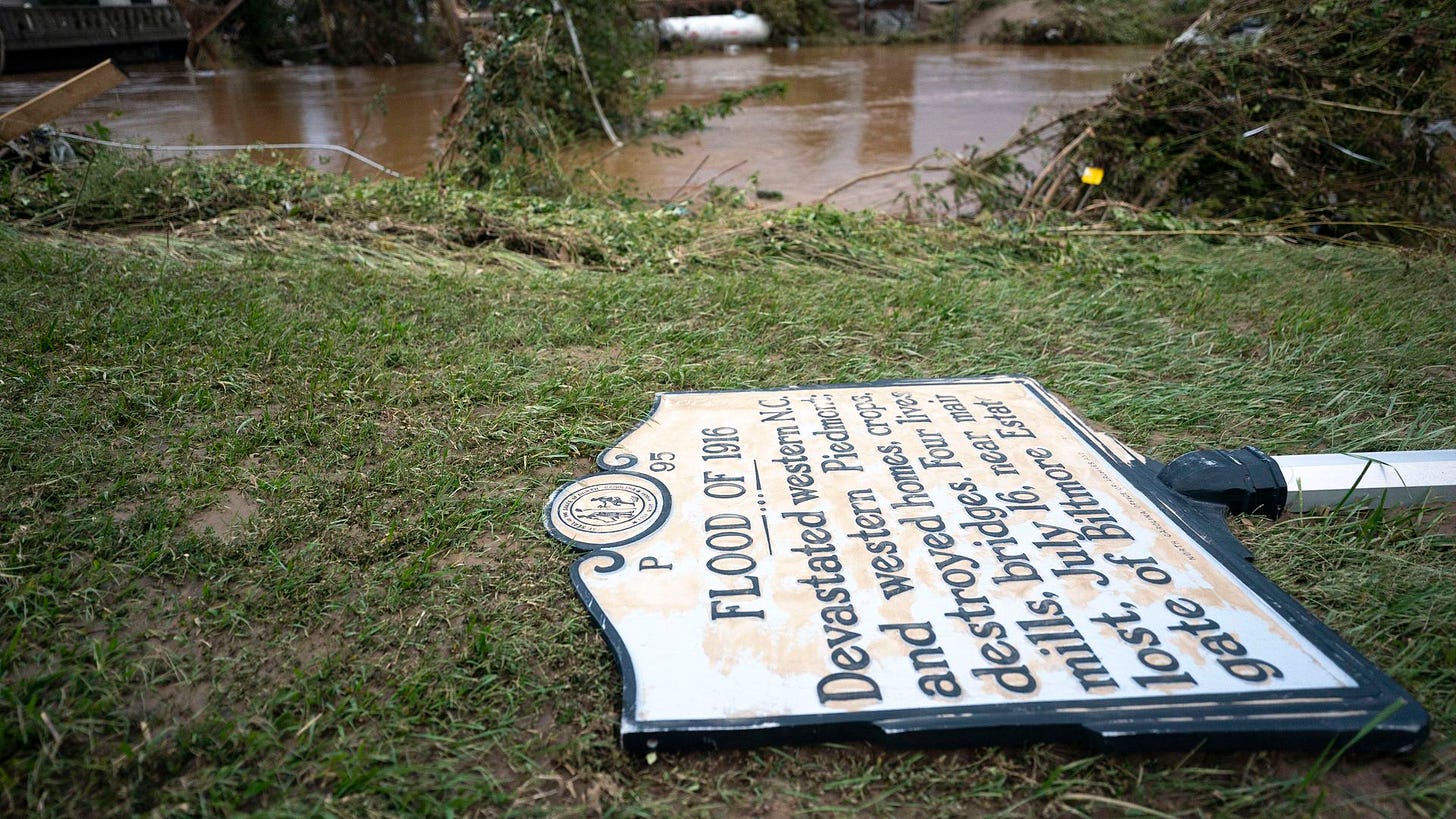Cities are stories—and right now, they're being rewritten by water, fire, and fractured assumptions. In the second part of this two-part Citizen One episode, an urbanNext original podcast series, I sit down with city scientist Ramon Gras Aloma, founder of Aretian Urban Analytics and Design and co-author, with Jeremy Burke, of the book City Science: Performance Follows Form. In part 2, we leave the theoretical realm of high-performance innovation districts and step directly into the rising tides of climate risk. Not as abstract models, but as lived experiences. Mine included.
Hurricane Helene didn’t hit New Orleans. It punched straight into my childhood stomping grounds—the Blue Ridge Mountains. The city of Asheville, North Carolina, long romanticized as a climate haven, exposed for what it truly is: vulnerable, unevenly prepared, and perched on a dangerous mythology of safety. The storm didn’t just flood rivers and mountain towns—it obliterated the illusion. It exposed the failure of imagination that allowed Asheville to be mythologized as a climate haven, while entire mountain towns nearby were wiped off the map. This wasn’t an anomaly. It was the latest chapter in a long, violent history of ignoring what these mountains have been trying to tell us for more than a century.

Ramon and I unravel the promise and peril of the term “climate resilience.” We name names: Jakarta. Dubai. Cape Town. Valencia. Asheville. Cities shaped by centuries, but too often managed with blinders. The core insight? It’s not just about forecasting the next catastrophe—it’s about measuring the structural blind spots that got us here and rebuilding with intention.
Ramon’s work isn’t wishful futurism. It’s precision engineering for equity, adaptability, and livability. It’s about arming small and mid-sized cities with the tools they’ve been denied—simulation software, scenario planning, AI-powered diagnostics—and calling bullshit on the idea that climate resilience is a certificate you earn rather than a commitment you maintain.
From biotech-industrial nodes in Barcelona to Rio de Janeiro’s innovation corridors to food logistics under threat in Boston’s urban core, this episode dives deep. We talk about real consequences and real change: vertical urban forms, distributed infrastructures, and a feedback loop for cities grounded in both fractal logic and human survival.
This is not a podcast about design for design’s sake. It’s about designing with your eyes open—to history, to entropy, and to the undeniable power of a well-placed question.
Listen if you’re a policymaker, planner, or simply someone who refuses to accept that the future has already been written.
And if you haven’t heard Part One yet—go back. This series is building something.
Part Two
00:00 Exploring Urban Data Science and Innovation Districts
02:56 Climate Risk and Urban Resilience
05:55 Innovative Urban Design Examples
08:47 Urban Analytics in Climate Change
12:13 Urban Risk Management and Resilience Strategies
15:08 Tailored Solutions for Urban Contexts
18:02 The Role of Data in Urban Planning
20:55 Empowering Communities with Technology
24:14 The Future of Urban Growth and Livability
27:08 Balancing Urban Systems for Better Outcomes
29:55 Integrating Data Science and Human Experience
32:53 Rebuilding Resilient Communities
35:48 Conclusion and Future Perspectives






Share this post